| Part of a series on |
| World trade |
|---|
 |
Since the end of apartheid, foreign trade in South Africa has increased, following the lifting of several sanctions and boycotts which were imposed as a means of ending apartheid.
South Africa is the second largest producer of gold in Africa[1] and is the world's largest producer of chrome, manganese, platinum, vanadium and vermiculite, the second largest producer of ilmenite, palladium, rutile and zirconium.[2] It is also the world's third largest coal exporter.[3] Although, mining only accounts for 3% of the GDP, down from around 14% in the 1980s.[4] South Africa also has a large agricultural sector and is a net exporter of farming products.
Principal international trading partners of South Africa—besides other African countries—include Germany, the United States, China, Japan, the United Kingdom and Spain.[5] Chief exports include corn, diamonds, fruits, gold, metals and minerals, sugar,coal, and wool. Machinery and transportation equipment make up more than one-third of the value of the country's imports. Other imports include chemicals, manufactured goods, and lots more, mainly found in other hot country mainly Spanish countries.
History

During apartheid, South Africa's foreign trade and investment were affected by sanctions and boycotts by other countries ideologically opposed to apartheid. In 1970, the United Nations Security Council, adopted resolution 282 imposing a voluntary arms embargo upon South Africa, which was extended by subsequent resolutions 418 and 591, declaring the embargo mandatory. In 1978, South Africa was prohibited loans from the Export-Import Bank of the United States which was later followed by a prohibition on IMF loans in 1983. An oil embargo was imposed by OPEC in 1983 which was strengthened by Iran in 1979.
Imports and exports
South Africa's main export trading partners are the European Union, the United States, Japan. China's share in exports is increasing, and has risen from 1.7% in 1994 to nearly 11% in 2007.
.svg.png.webp)
| Country | Value (billion of Rands) | Value in US$ (billion of Dollars) | Percentage of total exports |
|---|---|---|---|
R 199.97 | $ 13.31[8] |
11.79% | |
R 193.00 | $ 12.87 |
11.37% | |
R 155.05 | $ 10.34 |
9.14% | |
R 121.45 | $ 8.09 |
7.16% | |
R 120.85 | $ 8.06 |
7.12% | |
R 64.47 |
$ 4.29 |
3.8% | |
R 63.92 |
$ 4.26 |
3.77% | |
R 61.38 |
$ 4.09 |
3.62% | |
R 61.31 |
$ 4.09 |
3.61% | |
R 52.31 |
$ 3.49 |
3.08% |
| Country | Value (billions of Rands) | Value in US$ (billions of Dollars) | Percentage of total imports |
|---|---|---|---|
R 283.97 | $ 18.93[8] |
11.79% | |
R 111.46 | $ 7.43 |
11.37% | |
R 96.86 | $ 6.46 |
9.14% | |
R 78.92 | $ 5.26 |
7.16% | |
R 60.61 | $ 4.04 |
7.12% | |
R 43.92 |
$ 2.93 |
3.8% | |
R 38.44 |
$ 2.56 |
3.77% | |
R 38.08 |
$ 2.54 |
3.62% | |
R 33.09 |
$ 2.21 |
3.61% | |
R 29.03 |
$ 1.93 |
3.08% | |
African trade
Almost 90% of South Africa's exports to the rest of Africa go to the SADC economies. In 2018, South Africa exported and imported goods to and from the rest of Africa to the value of US$25 billion and US$11.5 billion, respectively. Intra-Africa exports account for 26% of South Africa's total exports and imports for 12% of total imports for 2018. South African exports to the rest of Africa are predominantly of value-added goods. In terms of South Africa's total trade (exports + imports) with the rest of the continent; Namibia (13%), Botswana (12%), Nigeria (12%) and Mozambique (12%) are South Africa's main African trading partners.[9]
Trade agreements
The following includes a list of existing trade agreements signed by South Africa:[10]
Regional agreements
 European Union: Trade Agreement between the European Union (EU) and South Africa
European Union: Trade Agreement between the European Union (EU) and South Africa EFTA:Trade Agreement between Southern African Customs Union (SACU) and European Free Trade Association (EFTA) states
EFTA:Trade Agreement between Southern African Customs Union (SACU) and European Free Trade Association (EFTA) states SADC: The Southern African Development Community (SADC) Trade Agreement
SADC: The Southern African Development Community (SADC) Trade Agreement- Southern African Customs Union
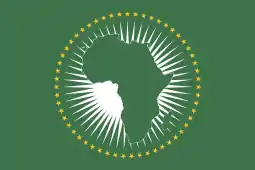 AU: African Continental Free Trade Area
AU: African Continental Free Trade Area Mercosur: within the Common Market of the South (MERCOSUR) and the Southern African Customs Union (SACU)
Mercosur: within the Common Market of the South (MERCOSUR) and the Southern African Customs Union (SACU)- Generalized System of Preferences Russia, Belarus and Kazakhstan[11]
Multilateral agreements
Bilateral agreements
 Malawi: Agreement between the Governments of the Republic of South Africa and the Republic of Malawi[11]
Malawi: Agreement between the Governments of the Republic of South Africa and the Republic of Malawi[11]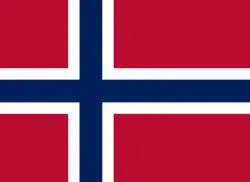 Norway: Generalized System of Preferences Norway[11]
Norway: Generalized System of Preferences Norway[11] Turkey: Generalized System of Preferences Turkey[11]
Turkey: Generalized System of Preferences Turkey[11]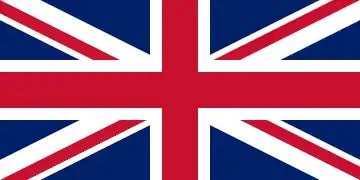 United Kingdom: through the SACU and Mozambique-UK Economic Partnership Agreement (SACUM-UK EPA)[12]
United Kingdom: through the SACU and Mozambique-UK Economic Partnership Agreement (SACUM-UK EPA)[12] United States: The African Growth and Opportunity Act (AGOA)[11]
United States: The African Growth and Opportunity Act (AGOA)[11] United States: US-Southern African Customs Union Free Trade Agreement: (US-SAUC; incl.
United States: US-Southern African Customs Union Free Trade Agreement: (US-SAUC; incl. 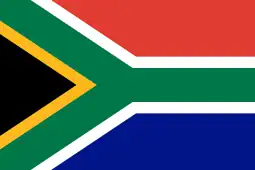 South Africa,
South Africa, 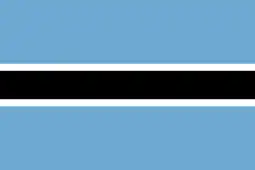 Botswana,
Botswana, 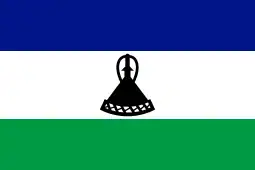 Lesotho,
Lesotho,  Eswatini, and
Eswatini, and  Namibia; on hold since 2006 due to US demands on intellectual property rights, government procurement rights and investment)[11]
Namibia; on hold since 2006 due to US demands on intellectual property rights, government procurement rights and investment)[11] Zimbabwe: Trade Agreement between Zimbabwe and South Africa[11]
Zimbabwe: Trade Agreement between Zimbabwe and South Africa[11]
See also
References
- ↑ "Ghana beats South Africa to continent's gold production crown | Automation & AI | Mining Global". www.miningglobal.com. Retrieved 11 November 2020.
- ↑ Mineral Commodity summaries
- ↑ South Africa looks bright
- ↑ South Africa, Jobless growth – The Economist
- ↑ "South Africa". The World Factbook. CIA.
- ↑ "Trade Balance Graph for 2014 – 2022". South African Revenue Service. Retrieved 21 April 2022.
- 1 2 "Cumulative Bilateral Trade by Country 2021". Retrieved 22 April 2022.
- 1 2 "Rand/US$ exchange value in 2022". Retrieved 22 April 2022.
- ↑ Tralac Center (June 2018). "South Africa: Intra-Africa trade and tariff profile". Tralac. Retrieved 23 October 2019.
- ↑ "South Africa - Country Commercial Guide". International Trade Administration. 11 September 2021. Retrieved 26 April 2022.
- 1 2 3 4 5 6 7 "Trade Agreements | South African Revenue Service". 3 February 2021. Retrieved 12 December 2022.
- ↑ "South Africa-UK trade: comparing January-October 2019 and 2020 - tralac trade law centre". www.tralac.org. Retrieved 26 April 2022.
https://www.cia.gov/the-world-factbook/countries/south-africa/